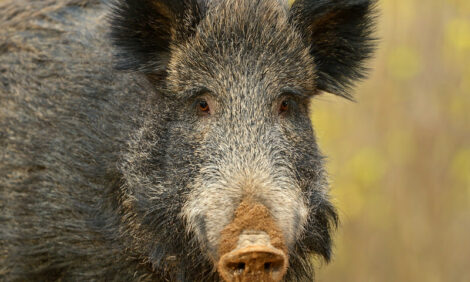



Effect of Altrenogest Treatment on Homogeneity of Follicular Development in Sows
THAILAND - Treatment with Altrenogest (Ceva Animal Health Thailand) affected the number of follicles, follicular size and homogeneity of follicles in sows, according to research from Thailand in a paper presented at IPVS 2014.Introduction
The variation of follicular development and ovulation time were related to the diversity of embryo during pre-implantation stage, according to S. Kitkha of Kasetsart University in Nakhon Pathom, Thailand and co-authors.
The later-ovulating follicles resulted in less-developed embryos which were eliminated due to the limitation of uterine space1. Synthetic progestin (altrenogest) feeding during lactation and post weaning in multiparous sows enhanced reproductive performance in subsequent litter. Many studies revealed a higher ovulation rates and embryo survival2.
These advantages might be related to an improvement of follicular growth/homogeneity.
The objective of this study was to evaluate the effect of altrenogest on the homogeneity of follicular development.
Materials and Methods
Fifty-nine lactating sows, parity 6 to 8, were divided into 4 groups (T1 – T4). T1 was a control group. The sows were not received altrenogest (AG) (Altresyn®, Ceva Animal Health). Other groups were administered orally with AG in different doses and duration (T2: 20mg per day, five days; D-4 – D0; T3: 20 mg twice a day (40mg per day, seven days; D-4 – D2; T4: 20mg per day, seven days; D-4 – D2) (D-4: four days before D0; D0: weaning day; D2: two days post D0).
After AG, the sows in each group were separated into 2 subgroups (A and B). The sows in subgroup A were slaughtered on D1 post weaning (T1) or D1 post AG (T2 – T4) whereas the sows in subgroup B were slaughtered on D4 post weaning (T1) or D4 post AG (T2 – T4).
Ovaries were obtained after slaughter. All follicles were counted and measured for their size (diameter).
Number of follicles (NF), follicular size (FS) and coefficient of variance (%CV) of FS among four groups and two subgroups were compared by two-way ANOVA and followed by Bonferroni and simple effect when it had interaction.
Results
NF decreased significantly from D1 to D4 post AG in T3 and T4 (Table 1). On D4 post AG, T4 had less NF than T2. FS increased from D1 to D4 post AG. On D1 post AG, FS of T2 – T4 was smaller than T1 (control).
However, the follicles in T3 and T4 grew rapidly to a larger diameter than T1 on D4 post AG. Moreover, %CV of FS in T4 had the least value on D4 (p<0.05).

Conclusions and Discussion
During the progress of follicular phase, some small and medium follicles were atresia. Dose and duration of AG treatment influenced follicular growth rate which reflected the number of escaped follicles from atresia.
AG prevent the growth of medium to large follicles, so only the small follicles could reach medium size.
Because of a larger proportion of medium follicles, the average follicle size in treatment group (T2 – T4) on D1 (subgroup A) was less than control (T1). Subsequently, pool of medium size follicles developed to be the large size follicles on D4 (subgroup B).
Incomplete suppression of LH release in T4 might allow follicular growth from small to medium size during altrenogest treatment, therefore most of follicles were large follicles at D4 with more homogeneous sizes (the least %CV).
In contrast, twice a day of altrenogest treatment (T3) might inhibit LH completely which resulted in a slower growth rate of follicles in T3 than T4.
This study demonstrated that altrenogest treatment protocol affected the number of follicles, follicular size and homogeneity of follicles.
Acknowledgments: Center for Agricultural Biotechnology, Kasetsart University, Center of Excellence on Agricultural Biotechnology: (AG-BIO/PERDO-CHE) Thailand, and Ceva Animal Health Thailand.
References
- Geisert and Schmitt. 2002. J Anim Sci 80: 54-65.
- Patterson J et al. 2008. J Anim Sci 86: 1996-2004.
The authors of this paper were S. Kitkha, A. Boonsoongnern, N. Ratanavanichrojn, P. Jirawattanapong and A. Pinyopummin and it was presented at the 23rd IPVS Congres in Cancun, Mexico between 8 and 11 June 2014.









